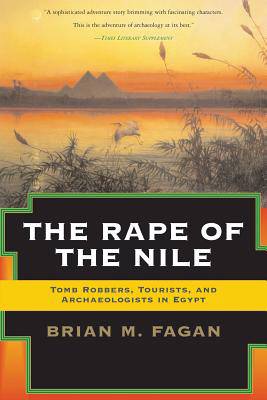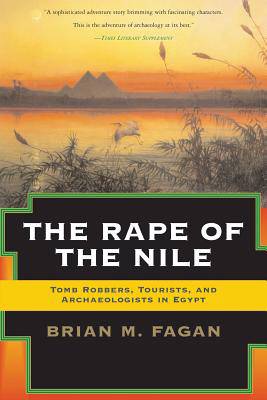
Bedankt voor het vertrouwen het afgelopen jaar! Om jou te bedanken bieden we GRATIS verzending (in België) aan op alles gedurende de hele maand januari.
- Afhalen na 1 uur in een winkel met voorraad
- In januari gratis thuislevering in België
- Ruim aanbod met 7 miljoen producten
Bedankt voor het vertrouwen het afgelopen jaar! Om jou te bedanken bieden we GRATIS verzending (in België) aan op alles gedurende de hele maand januari.
- Afhalen na 1 uur in een winkel met voorraad
- In januari gratis thuislevering in België
- Ruim aanbod met 7 miljoen producten
Zoeken
The Rape of the Nile
Tomb Robbers, Tourists, and Archaeologists in Egypt, Revised and Updated
Brian Fagan
Paperback | Engels
€ 37,45
+ 74 punten
Omschrijving
The scandalous rape of Ancient Egypt is a historical vignette of greed, vanity, and dedicated archaeological research. It is a tale vividly told by renowned archaeology author, Brian Fagan, with characters that include the ancient historian Herodotus; Theban tomb robbers; obelisk-stealing Romans; Coptic Christians determined to erase the heretical past; mummy traders; leisured antiquarians; major European museums; Giovanni Belzoni, a circus strongman who removed more antiquities than Napoleon's armies; shrewd consuls and ruthless pashas; and archaeologists such Sir Flinders Petrie who changed the course of Egyptology. This is the first thoroughly revised edition of The Rape of the Nile - Fagan's classic account of the cavalcade of archaeologists, thieves, and sightseers who have flocked to the Nile Valley since ancient times. Featured in this edition are new accounts of stunning recent discoveries, including the Royal Tombs of Tanis, the Valley of Golden Mummies at Bahariya, the Tomb of the Sons of Ramses, and the sunken city of Alexandria (whose lighthouse was one of the Seven Wonders of the Ancient World). Fagan concludes with a clear-eyed assessment of the impact of modern mass tourism on archaeological sites and artifacts.
Specificaties
Betrokkenen
- Auteur(s):
- Uitgeverij:
Inhoud
- Aantal bladzijden:
- 320
- Taal:
- Engels
Eigenschappen
- Productcode (EAN):
- 9780813340616
- Verschijningsdatum:
- 1/09/2004
- Uitvoering:
- Paperback
- Formaat:
- Trade paperback (VS)
- Afmetingen:
- 154 mm x 235 mm
- Gewicht:
- 458 g

Alleen bij Standaard Boekhandel
+ 74 punten op je klantenkaart van Standaard Boekhandel
Beoordelingen
We publiceren alleen reviews die voldoen aan de voorwaarden voor reviews. Bekijk onze voorwaarden voor reviews.









